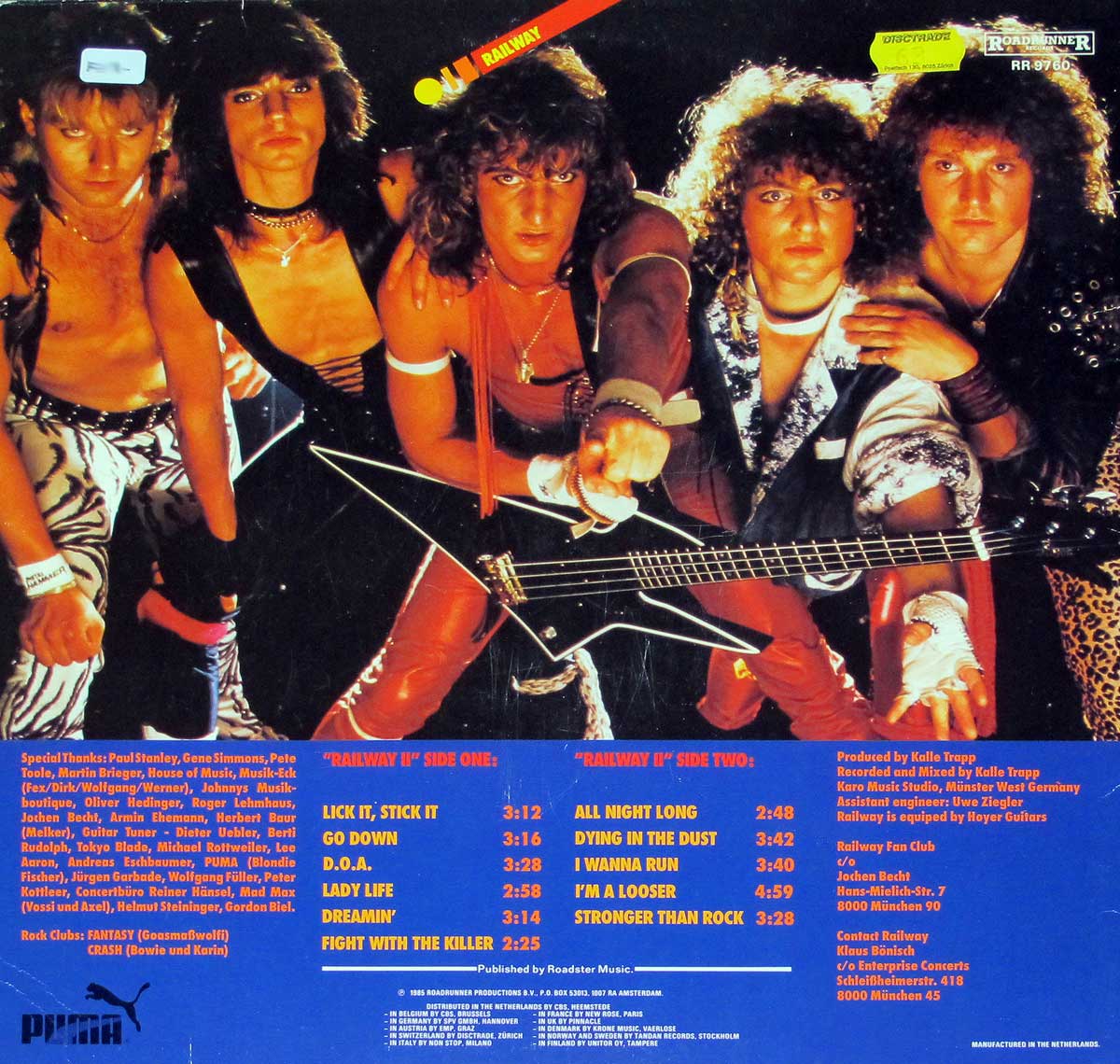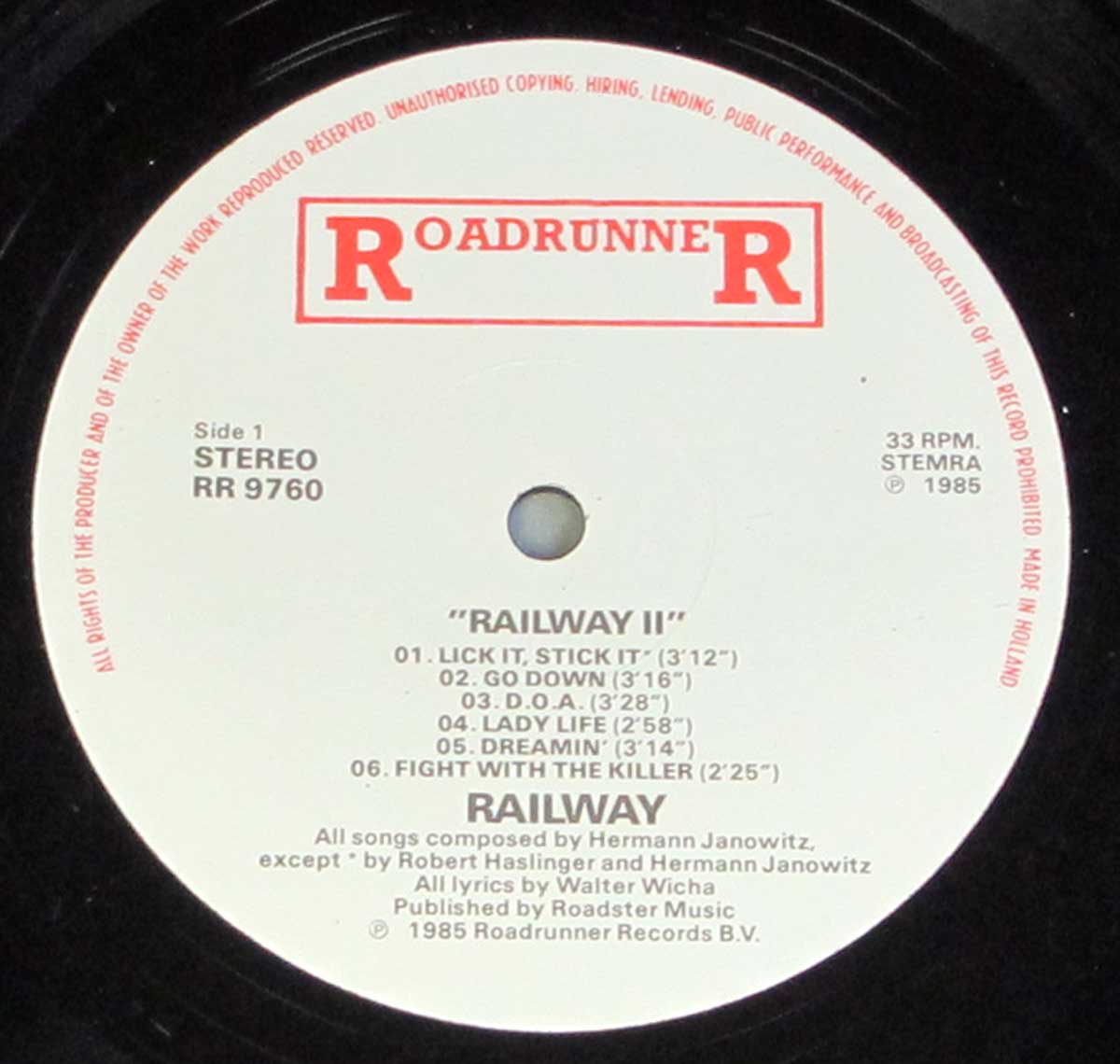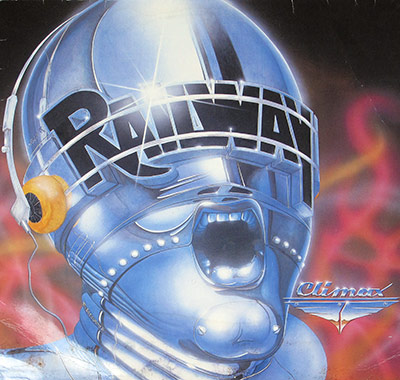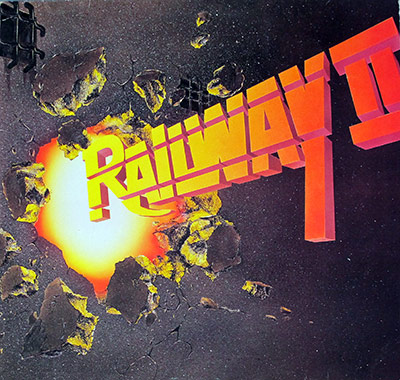Railway II Album Description:
Historical & Cultural Backdrop
In 1985, the world of rock and metal was in flux. The New Wave of British Heavy Metal (NWOBHM) had already made its imprint, inspiring waves of European acts to push harder and faster. On the global stage, bands like Iron Maiden, Judas Priest, and Ozzy Osbourne were dominating airwaves and arenas. Meanwhile, in Germany, a strong domestic metal and hard rock scene was flourishing—bands like Accept, Helloween, and later Kreator or Sodom were starting to define a distinct Teutonic sound. It was a time when heavy metal was branching: the raw traditional heavy metal style coexisted with burgeoning subgenres like speed and thrash metal.
Politically and socially, 1985 was a midpoint in the Cold War era. In Western Europe, reunification was still years away; East and West Germany remained formally separate. Youth culture in the West German states gravitated toward assertive music forms as forms of identity and rebellion. German metal bands often had to negotiate a dual identity: appealing to local audiences while attempting crossover into the Anglo-American-dominated metal world.
The German Heavy Metal Milieu & Peers
The genre label “German heavy metal” in the mid-1980s encompassed a range of styles: melodic traditional heavy metal, speed metal, and early thrash. Railway’s sound is often placed among more classic heavy metal, akin to Accept in its riff-driven, midtempo aggression and vocal-forward approach.
Other German acts during this era included:
- Accept — by this time already established, their mid-80s albums like Metal Heart and Russian Roulette influenced many domestic bands.
- Iron Angel — their Winds of War (1986) album (recorded at Karo Studio) leaned toward speed metal. Kalle Trapp was involved as producer/engineer.
- Destruction — by the mid-80s evolving into a major thrash force. Their releases Mad Butcher and Release from Agony were produced at Karo Studio under Trapp’s guidance.
- Paradox, Sieges Even, Mad Max — among others, also recorded or produced under Karo / Trapp’s influence, demonstrating how one studio and producer became central in shaping German metal’s sound.
Thus, Railway’s Railway II arrived in a dynamic environment: neither purely underground, nor yet fully mainstream in Germany’s metal hierarchy.
Band History & Lineup Dynamics
Railway was formed in 1977 in Munich, Bavaria, and over the years they maintained a core identity rooted in heavy rock/metal. The band spent the late ’70s and early ’80s building up their presence in the German metal underground. Their style leaned toward classic heavy metal with perhaps a rawer edge than more polished contemporaries.
By the time Railway II was recorded in 1985, the lineup comprised:
- Vocals: Walter Wicha
- Lead & Rhythm Guitar: Robert Haslinger
- Lead & Rhythm Guitar: Hermann Janowitz
- Bass: Werner Thaller
- Drums: Hasi Haslinger
Earlier or alternative lineups included various bassists (e.g. Harry Enzian, “Speedy” Knobel) and guitarists (Mike Sperner, Florian Allgayer). Hermann Janowitz is later listed as a past member (and deceased by 1988). The rotating personnel reflects the challenges many German metal bands faced—financial pressures, shifting musical tastes, and internal dynamics.
By the mid-’80s, Railway had already released a self-titled debut LP (1984), which laid the groundwork for their heavier follow-up. The band had expanded in ambition and sought to push their sound further on Railway II.
Musical Character & Exploration on Railway II
Railway II presents a palette of aggressive riffs, driving rhythms, and emphatic vocal delivery. Compared to its predecessor, it leans harder, with more emphasis on tight, punchy guitar arrangements and energetic pace. Among the 11 tracks, standout themes emerge: rebellion, existential confrontation, and nocturnal imagery (e.g. “Dying in the Dust,” “I Wanna Run”).
Although the style remains largely within traditional heavy metal boundaries, there are subtle shifts:
- Tempo variety: Some songs (e.g. “Fight With the Killer”) descend into almost punkish brevity and urgency, while others (e.g. “I’m a Looser”) open into more expansive, midtempo space.
- Dual guitars: The presence of two guitarists allows harmonized leads and layered riff interplay, augmenting depth beyond a single-riff approach.
- Production clarity: Under Kalle Trapp’s supervision and with engineering by Uwe Ziegler, the instrument separation is clearer than in many contemporaneous underground releases. Guitars, drums, and vocals are cleanly defined, though not sterile.
- Melodic hooks: Despite the raw sound, Railway retains a focus on choruses and melodic lift, particularly in tracks like “Dreamin’” and “Stronger Than Rock.”
In effect, Railway II straddles a line: rooted in classic heavy metal, yet gesturing toward the sharper, leaner sound that would soon become more common in speed and power metal arenas.
Production & the Role of Kalle Trapp
Kalle Trapp was already a central figure in German heavy metal by the mid-80s. He founded Karo Studio in Münster and produced or engineered numerous influential bands. His approach often combined clarity, punch, and a willingness to embrace aggressive tones without succumbing to murk or over-compression.
Trapp’s involvement on Railway II likely elevated the album’s sonic ambition. He had, around this time, worked with acts crossing over into thrash and speed, such as Destruction and Iron Angel, blending heavier dynamics with fidelity and punch.




